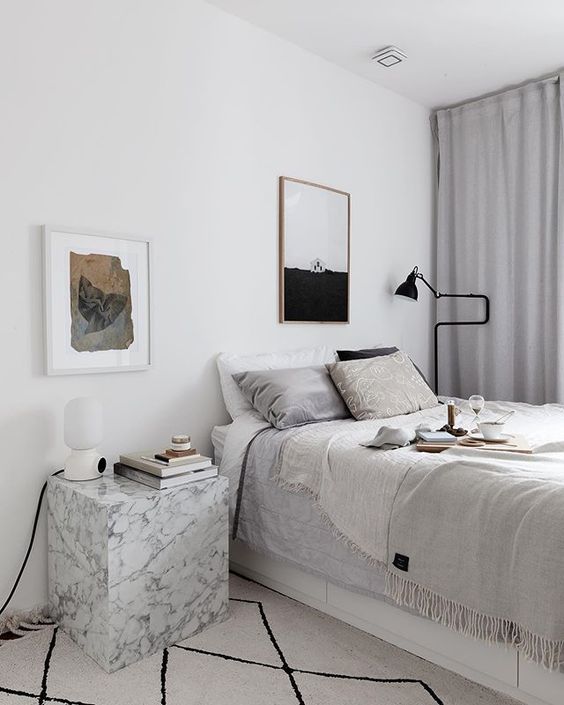In today’s world, where safety is a paramount concern, ensuring the presence of smoke detectors in our homes has become an absolute necessity.
While we often associate smoke detectors with common areas like living rooms and kitchens, it is equally essential to have them installed in bedrooms.
After all, we spend a significant portion of our lives sleeping and resting in our homes.
In this article, we will explore the best practices when it comes where to place smoke detector in bedroom.

General Guidelines for Smoke Detector Placement
Follow manufacturer’s instructions
When it comes to the placement of smoke detectors in your bedroom, it is crucial to carefully follow the instructions provided by the manufacturer.
Each brand and model may have specific guidelines for optimal performance.
Make sure to thoroughly read the user manual or any accompanying documentation to ensure that you are placing your smoke detector correctly.
Install on the ceiling or high on the wall
For maximum effectiveness, it is recommended to install smoke detectors on the ceiling or high on the walls.
Placing them at this height ensures that they can quickly detect smoke rising in case of a fire.
Ideally, they should be positioned away from any potential obstructions such as curtains, furniture, or decorations.
By mounting them up high, you give them a better vantage point and improve their ability to detect smoke particles promptly.
Avoid corners and dead air spaces
When choosing a location for your smoke detector within your bedroom, avoid corners as much as possible.
Corners tend to have stagnant air pockets which may interfere with proper detection.
Instead, opt for open areas where air can circulate freely and ensure better coverage throughout the room.
The general guidelines mentioned above provide a solid foundation for placing smoke detectors in your bedroom effectively.
However, keep in mind that these recommendations may vary depending on specific circumstances and local regulations.
It is always wise to consult with professionals or local authorities if you have any doubts regarding installation requirements in your area.


Ideal Placement within the Bedroom
Near Sleeping Areas
One of the key considerations when placing smoke detectors in the bedroom is to ensure they are located near sleeping areas.
This is crucial because it allows for early detection of smoke or fire, giving you and your loved ones more time to react and evacuate safely.
Placing a smoke detector near sleeping areas ensures that you are alerted promptly, even if the fire starts outside the bedroom itself.
It acts as an extra layer of security, providing an early warning system that can potentially save lives.
Directly Outside Bedroom Doors
A highly recommended placement for smoke detectors in bedrooms is directly outside bedroom doors.
By installing a smoke detector in this location, you create a barrier between potential fire hazards outside the room and your sleeping area.
If there’s a fire breakout, this strategic positioning will quickly detect any signs of smoke or flames before they reach your bedroom, allowing you to take immediate action.
Remember to place these detectors high on the wall or ceiling for optimal effectiveness.
Inside Bedrooms, if Possible
While it might not always be feasible or practical due to various factors like aesthetics or wiring constraints, placing a smoke detector inside bedrooms themselves can provide an added layer of protection.
This becomes particularly important if you tend to close your bedroom door while sleeping as it can create a closed-off environment that may delay detection from detectors placed solely outside the room.
If possible, consider installing one within each bedroom for comprehensive coverage throughout your home.
These thoughtful placements ensure that the detectors can promptly alert you, providing valuable time to escape and seek safety.


Additional Factors to Consider
Distance from potential obstructions (e.g., ceiling fans, curtains)
When installing smoke detectors in the bedroom, it is crucial to consider their proximity to potential obstructions.
Ceiling fans, for instance, can create air currents that may interfere with the proper functioning of smoke detectors.
Therefore, it is advisable to keep a safe distance between the detector and the fan blades.
This way, you ensure that any smoke or fire particles have a clear path to reach the sensor without being disrupted by swirling airflow from the fan.
Similarly, curtains hanging near the detector can obstruct its vision and hinder its ability to detect smoke effectively.
To avoid this issue, make sure there is enough space between the detector and any hanging drapes or curtains.
Avoiding direct exposure to drafts or airflow from vents
Another crucial factor when placing a smoke detector in your bedroom is avoiding direct exposure to drafts or airflow from vents.
Air movement caused by vents can alter the course of rising smoke particles and potentially delay detection by your smoke detector.
Therefore, it is wise not to position your detector directly adjacent to air vents or registers where drafts are most likely present.
Instead, opt for locations that are shielded from strong airflow but still strategically positioned within the room for maximum coverage.
Conclusion
The proper placement of smoke detectors in bedrooms is a matter of utmost importance when it comes to ensuring the safety and well-being of individuals and their homes.
Remember that prevention is always better than cure when it comes to safeguarding your loved ones and property from potential disasters.
Stay proactive by regularly testing your smoke detectors and replacing batteries as needed—only through diligence can we ensure a sound sleep knowing that we have taken all necessary precautions to protect ourselves against unforeseen hazards.






